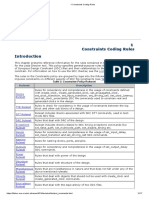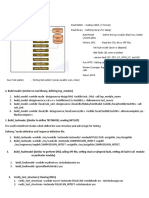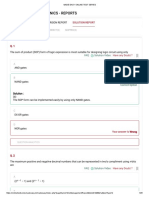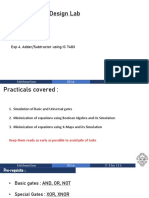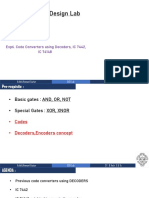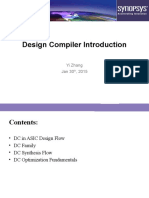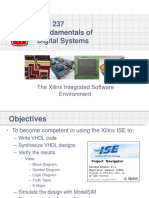0% found this document useful (0 votes)
246 views22 pages1 DFT Coding Rules
The document describes design for test (DFT) coding rules for checking a design. It discusses several rulesets for data capture, fault coverage, scan insertion and informational rules. It provides details on specific rules for avoiding both positive and negative edge triggered flip-flops, and rules to prevent clocks from affecting clock and data pins of registers to ensure proper testability. The document also notes some limitations in the tool compared to RTL DRC checks in terms of timing analysis and test protocol handling.
Uploaded by
Kshitij GurjarCopyright
© © All Rights Reserved
We take content rights seriously. If you suspect this is your content, claim it here.
Available Formats
Download as PDF, TXT or read online on Scribd
0% found this document useful (0 votes)
246 views22 pages1 DFT Coding Rules
The document describes design for test (DFT) coding rules for checking a design. It discusses several rulesets for data capture, fault coverage, scan insertion and informational rules. It provides details on specific rules for avoiding both positive and negative edge triggered flip-flops, and rules to prevent clocks from affecting clock and data pins of registers to ensure proper testability. The document also notes some limitations in the tool compared to RTL DRC checks in terms of timing analysis and test protocol handling.
Uploaded by
Kshitij GurjarCopyright
© © All Rights Reserved
We take content rights seriously. If you suspect this is your content, claim it here.
Available Formats
Download as PDF, TXT or read online on Scribd
/ 22

















